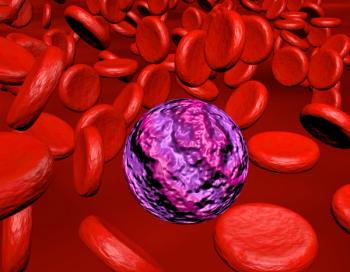
- Oncology Vol 29 No 4_Suppl_1
- Volume 29
- Issue 4_Suppl_1
(P039) Outcomes of Patients With Glioblastoma Receiving Concurrent Radiation Treatment and Antiepileptic Agents With Histone Deacetylase Inhibitor Activity
The use of antiepileptic HDACi drugs during RT for GBM did not significantly improve outcomes or RT response in this retrospective analysis. Further study of the concomitant use of HDACis and TMZ is necessary to elucidate clinically relevant results.
Nicholas S. Boehling, MD, Erik P. Sulman, MD, PhD; UT MD Anderson Cancer Center
BACKGROUND: Preclinical studies have demonstrated increased radiosensitivity of gliomas using histone deacetylase inhibitors (HDACis), such as valproic acid (VA). We hypothesized that patients with glioblastoma (GBM) who are treated with antiepileptics with HDACi properties during radiotherapy (RT) would exhibit improved outcomes.
METHODS: A retrospective analysis was performed of patients treated with RT for GBM. Outcomes included overall survival (OS), progression-free survival (PFS), and RT response. Patients were noted for use of VA and other antiepileptic mediations, as well as temozolomide (TMZ) during RT.
RESULTS: Data for 267 patients were available for analysis, with a median age of 57 years. Median OS and PFS for the cohort were 13.9 months and 4.1 months, respectively. A total of 19 (11%) patients received VA, and 42 (24%) patients received other antiepileptics with HDACi activity during the course of RT. Positive RT response was significantly associated with improved median OS (21.6 mo vs 10.1 mo; P < .01) and PFS (10.2 mo vs 2.7 mo; P < .01). No significant benefit in OS (14.9 mo vs 13.8 mo; P = NS), PFS (5.0 mo vs 4.1 mo; P = NS), or RT response (odds ratio [OR] = 1.19; P = NS) was seen for patients receiving VA. For patients receiving any HDACi, there was a significant improvement in median OS (15.6 mo vs 13.5 mo; P < .05) but no significant change in median PFS (5.2 mo vs 3.7 mo; P = NS). A total of 32 (55%) patients receiving HDACis showed a positive response to RT compared with 98 (47%) patients not receiving HDACi s(OR = 1.39; P = NS). When stratified by TMZ use, HDACi use did not result in any significant change in median OS, PFS, or RT response. TMZ use was associated with a significant improvement in median OS (19.7 mo vs 11.4 mo; P < .01) and RT response (OR = 1.91; P = .01). On multivariate analysis, a Cox proportional hazards model showed similar results as compared with univariate analysis. HDACi use resulted in a nonsignificant improvement in outcomes (HR = 0.92; P = .64).
CONCLUSIONS: The use of antiepileptic HDACi drugs during RT for GBM did not significantly improve outcomes or RT response in this retrospective analysis. Further study of the concomitant use of HDACis and TMZ is necessary to elucidate clinically relevant results.
Proceedings of the 97th Annual Meeting of the American Radium Society -
Articles in this issue
Newsletter
Stay up to date on recent advances in the multidisciplinary approach to cancer.


















































































